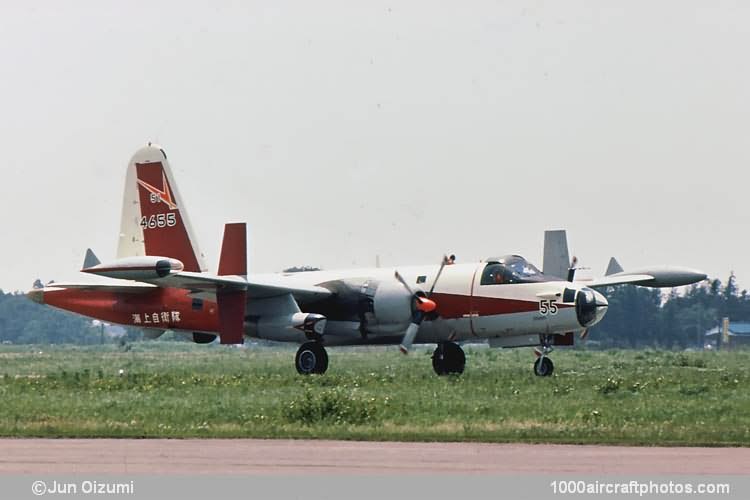01/31/2011. Remarks by Johan Visschedijk: "The final production version of the Neptune built by Lockheed was the P2V-7. It was fitted with two 3,500 hp Wright R-3350-32W Turbo-Compound radial engines and two 3,400 lb (1,542 kg) st Westinghouse J34-WE-36 turbojets, twin 0.50 in (12.7 mm) machine guns in a dorsal turret and with MAD 'stinger' tail. They were characterized by smaller ventral radome and tip tanks, and revised cockpit with clear, bulged, canopy.
Under the designation Model 726-45-14, Lockheed produced sixteen aircraft for the Japan Maritime Self Defense Force (JMSDF) maritime reconnaissance and anti-submarine patrol units, deliveries began in 1955 with JMSDF s/n 4601 to 4616. Another 48 were assembled in Japan by Kawasaki at Gifu, deliveries of those began in 1959, JMSDF s/n 4617 to 4664, the last was delivered in June 1965.
Under a contract awarded in February 1977 by the Technical Research and Development Institute of the Japan Defense Agency, Kawasaki modified the 39th production P2V-7 to experimental configuration as a Variable Stability Aircraft (VSA). Seven major modifications were made to the basic P2V-7 aircraft:
1. Installation of a fly-by-wire control system, with mechanical backup.
2. Installation, with flight control computer monitoring, of variable stability system to measure (a) variable control feelings
such as hysteresis, breakout forces etc; and (b) variable aircraft response, both lateral and longitudinal.
3. Removal of outboard trailing edge flaps and replacement with direct lift control (DLC) flaps of 14 ft 0 in (4.27 m) span,
with 20° upward and 40° downward travel. Vortex generators added forward of DLC flaps.
4. Addition of airfoil section all-moving side force surface (SFS), extending above and below each wing, out-board of
jet engine pod, with 30° travel to left or right. Each SFS was 14 ft 5.25 in (4.40 m) high.
5. Attachment of perforated airbrake to inside of each weapons bay door.
6. Removal of all ASW equipment, including APS-20 radome, though retaining MAD tailcone.
7. Installation of flight instrumentation and recorders, including angle of attack/sideslip sensors above nose. Addition of
two control operators' consoles in tactical compartment of fuselage.
The aircraft, which had the company project designation KA-353, made its first flight at Gifu on December 23, 1977, and was handed over to the 51st Air Squadron of the JMSDF for evaluation in 1978. After two years of experimental flying, it became a training aircraft for JMSDF test pilots, and was used, among other things, to develop STOL approaches, with the aid of ventral airbrakes, at glideslope angles of up to 6°-7°. The aircraft was withdrawn from use in 1982."
